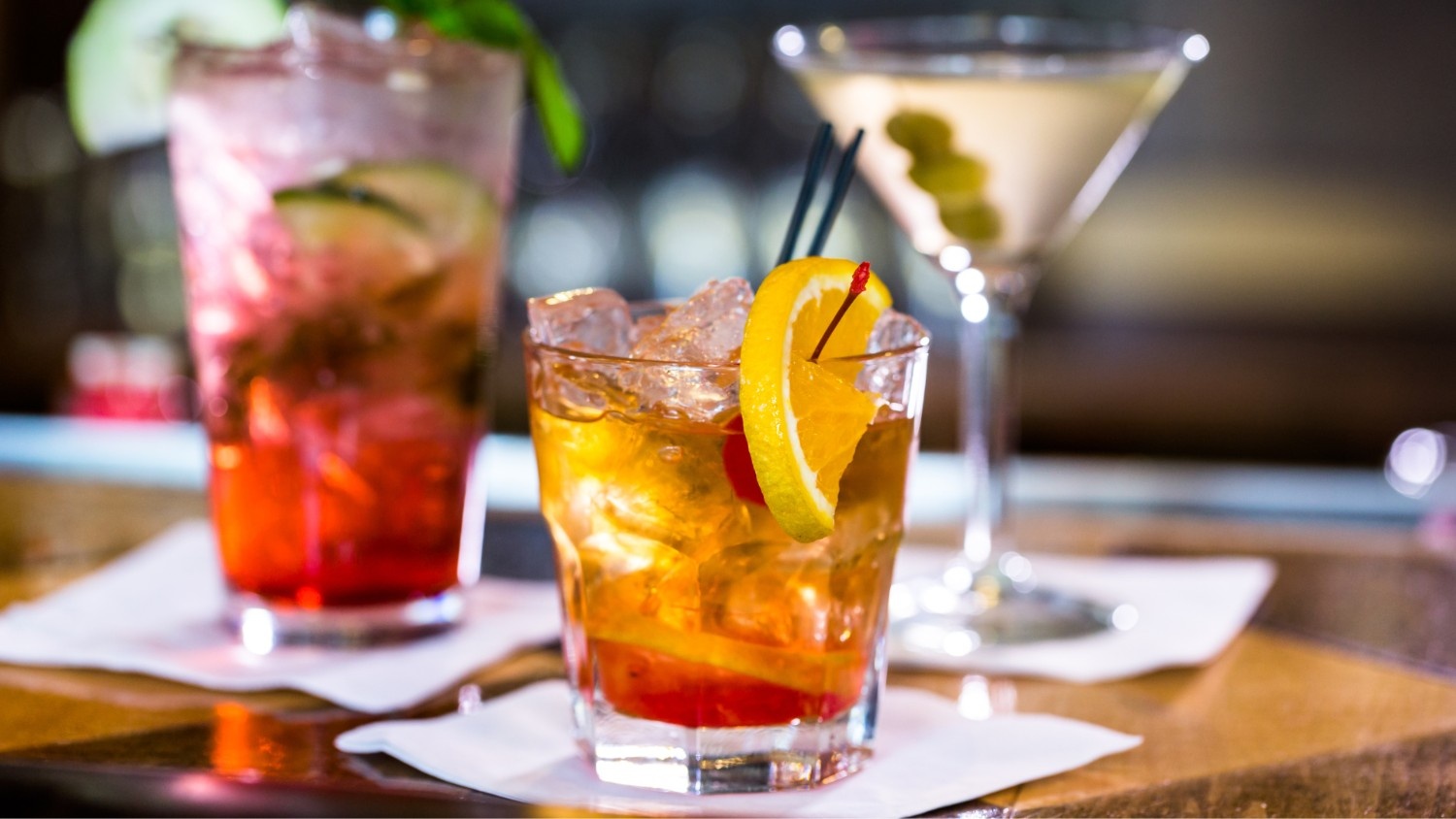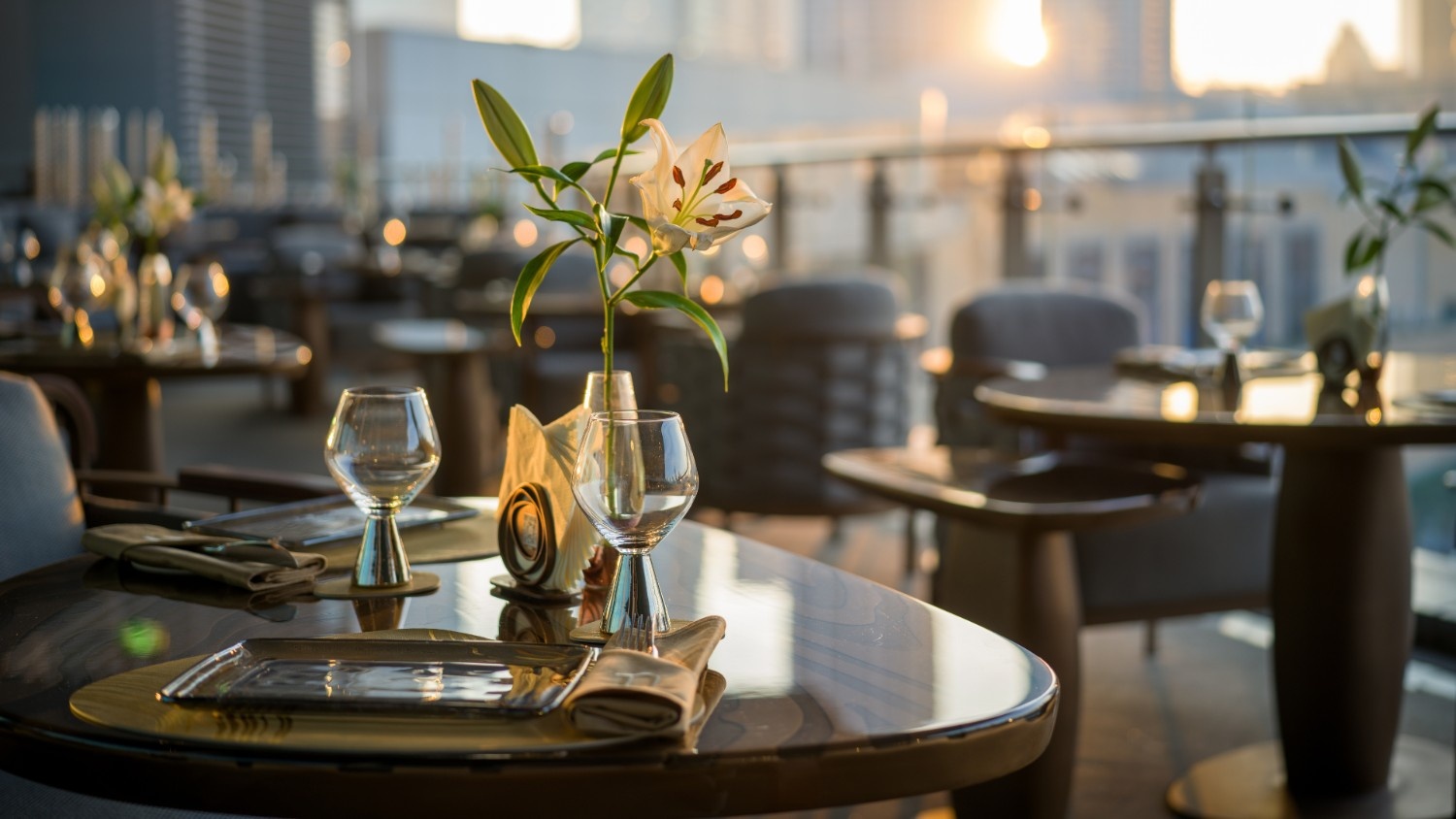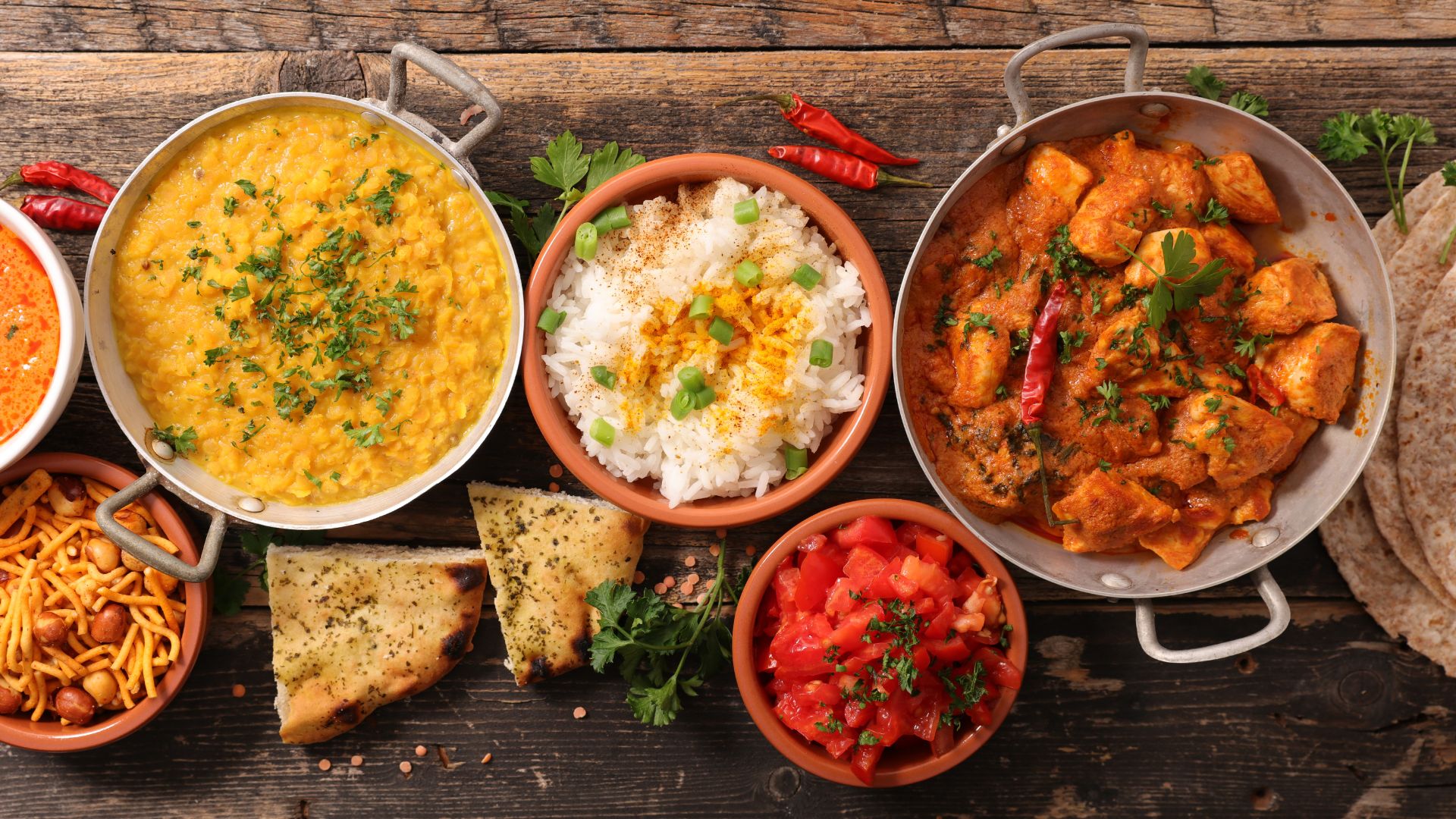Steak and shrimp didn’t begin as a refined pairing. It took shape in mid-20th-century North America, where steak and lobster were often served together as a show of abundance. The combination was more about contrast than cohesion.
What began as surf and turf became more focused: crusted tenderloin with herb-butter prawns, ponzu-dressed shrimp with soy-cured striploin. A dish once built on novelty now relies on clarity and control.
In Dubai, surf and turf has evolved beyond a contrast to a luxury experience. Prime cuts are marble-scored A5; shrimp arrive shelled to order from the Arabian Gulf or flown in chilled from Madagascar. The shrimp brings salinity and glycogen-sweetness. The steak delivers a rich, umami flavour and a deep, velvety texture.
Paired with the right wine, it doesn’t soften the contrast. It balances acidity, tempers salt, sharpens char, and holds fat in check.
Wines That Work With Your Plate

Once a simple companion to a meal, wine has become something far more considered. It's no longer just red for meat or white for seafood; the right bottle now plays an active role in shaping how a dish is experienced.
A poorly chosen wine can flatten a rich steak or strip the sweetness from shellfish. It can exaggerate salt, mute umami, or leave fat lingering long past its welcome. But when the pairing is correct, it transforms the meal. A sip resets the palate. The next bite tastes new again.
Which is why the choice matters. Below are our top picks of wines that don’t just go with the plate, but bring it to life.
1. Full-Bodied Reds
What They Do: Bring tannin, weight, and depth to match marbled beef and charred edges without blunting the palate.
What to Pour:
- Barolo (Piedmont, Italy): Nebbiolo offers grip and dried rose over a core of acidity. It holds firm against wagyu, drawing out fat without saturating it.
- Pauillac (Left Bank, Bordeaux): Cabernet-led blends feature layers of blackcurrant, cedar, and graphite. With porterhouse or striploin, the structure sears into the char, bringing clarity to the finish.
- Amarone della Valpolicella (Veneto, Italy): The air-dried grapes contribute richness and warmth. The slight sweetness balances roasted bone marrow, aged fat, or a hard-seared tomahawk.
2. Elegant Reds with Earth and Lift

What They Bring: Acidity to refresh, subtle tannins to frame lean cuts, and a mineral finish that draws out aromatic seasoning and shellfish salinity.
What to Pour:
- Volnay or Chambolle-Musigny (Burgundy, France): Pinot Noir grown on limestone, light on extraction but layered with forest floor and sour cherry. A natural partner for dry-aged tenderloin or lightly seared veal, where finesse matters more than weight.
- Etna Rosso (Sicily, Italy): Nerello Mascalese is raised in volcanic ash. Lithe and smoky, it pairs well with grilled seafood or lamb chops, bringing out the umami through its saline grip and lifted finish.
- Chianti Classico Riserva (Tuscany, Italy): Sangiovese aged just long enough to gain structure without losing its nerve. It is built for surf and turf seasoned with herb, olive oil, and citrus, where red fruit and acidity cleanse between bites.
At DOORS Dubai, plates are built with these pairings in mind. See how it all comes together on our menu.
3. White Burgundy & Structured Whites
What They Do: Provide lift, mineral tension, and a firm structure that holds through seafood, dairy, and butter-rich sauces.
What to Pour:
- Puligny-Montrachet (Côte de Beaune, France): A Chardonnay shaped by limestone, carrying crisp stone fruit and measured oak. It cuts clean through beurre blanc and brings clarity to lobster, scallops, or turbot.
- Vouvray (Chenin Blanc, Loire Valley): Whether dry or off-dry, it exhibits texture, wax, lanolin, and slow-ripening fruit. It handles foie gras, truffled fish, or duck with citrus reduction without slipping.
- Margaret River Chardonnay (Western Australia): Cool-climate weight with citrus line and a light oak wrap. It grips buttered shellfish, crusted halibut, or grouper with ease.
Sophistication isn’t in what you drink, but in knowing what it does to the food. To care about what’s in the glass is to care about the experience as a whole. It shows an understanding that flavour isn’t just about seasoning or technique, it’s also about contrast, balance, and the pauses in between.
Alternatives for the Refined Palate
Not every pairing needs to begin with wine. In Dubai, where both seafood and steak are handled with care, other pours bring their structure to the table.
- Fortified wines offer warmth and concentration, especially when paired with charred or slow-aged beef.
- Sparkling sake with mineral clarity lifts the natural sweetness of shellfish without overpowering it.
- Aged single malts, chosen for their smoke or coastal salinity, can sit comfortably beside grilled prawn or seared wagyu.
- Cocktails made with dry vermouth, citrus oils, or gentian root bitterness echo the contrast between fat and acid already present on the plate.
These options reflect Dubai’s refined palate, delivering a sensory experience where every sip elevates the textures and flavours on the plate.
Where to Enjoy the Perfect Surf and Turf in Dubai?

At DOORS Dubai, dry-aged steak and grilled shrimp arrive at the table still sizzling with residual heat, timed to the second. The ribeye carries a clean char, rich with flavour to the centre. The lobster is grilled just enough to hold its natural sweetness. Each plate is served at its prime: hot, balanced, and exact. First bites often lead to second visits, and dinners here become traditions.
The glass is given just as much attention. Full-bodied reds pair perfectly with steak, without overwhelming it. Crisp, mineral-driven whites lift the seafood’s sweetness and extend its finish.
This is surf and turf the way Dubai’s most seasoned diners like it; understated in appearance, exacting in execution, and quietly indulgent in every bite. For those who know where to go when it matters, Doors Dubai is already on the list.
FAQs
1. Can red wine pair well with both steak and shrimp on the same plate?
Yes, if chosen carefully. Light-to-medium-bodied reds, such as Pinot Noir or Etna Rosso, offer enough acidity and subtle tannin to complement shellfish without overpowering them, while still supporting lean cuts of beef.
2. What should I avoid when selecting a wine for surf and turf?
Avoid wines with high oak, excessive sweetness, or aggressive tannins. These can overwhelm the delicacy of shellfish or leave the steak tasting flat. The wrong glass shifts the focus away from texture and balance.
3. Are white wines ever appropriate with steak and shrimp together?
Structured whites, such as Puligny-Montrachet or a firm Chardonnay from Margaret River, can hold their own. This is especially true with seafood-led plates or steak cuts prepared with cream, citrus, or butter-based sauces.
4. Is sparkling wine a suitable alternative to still wines for surf and turf?
Yes. High-acid, mineral-driven sparkling wines, particularly blanc de blancs or grower Champagnes, offer lift and clarity. This is especially when paired with grilled prawns or rich beef tartare.
5. How important is the wine’s origin when pairing with surf and turf?
Very. Wines grown on limestone, volcanic, or coastal soils often show the kind of minerality, tension, and aromatic clarity that can elevate both land and sea proteins on the same plate.
6. Where in Dubai can I find expert pairings of wine with steak and shrimp?
DOORS Dubai Mall offers curated wine pairings carefully selected to complement both cuts and catches. Whether it’s A5 striploin or shellfish flown in that morning, each pour is chosen to serve the plate, not overshadow it.






.png)
.svg)

